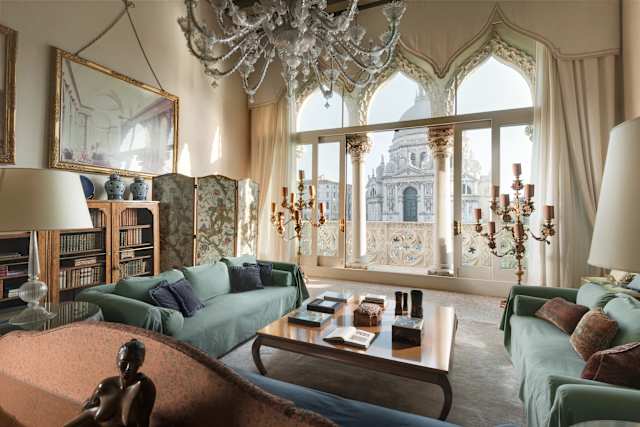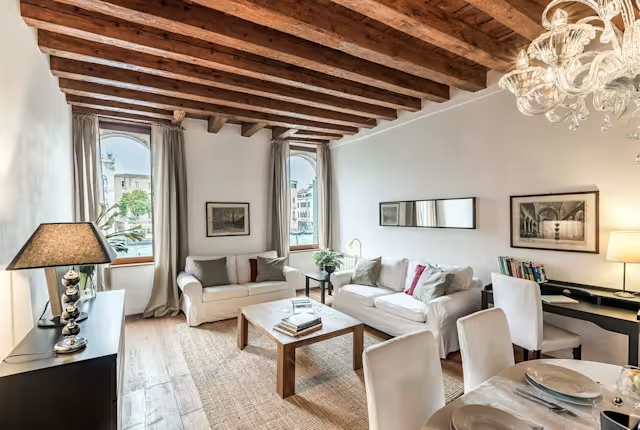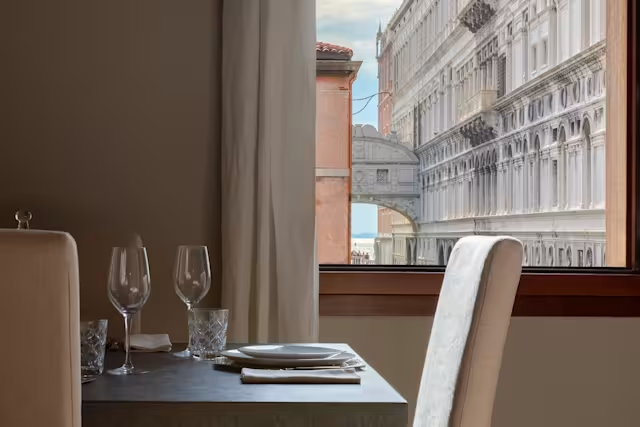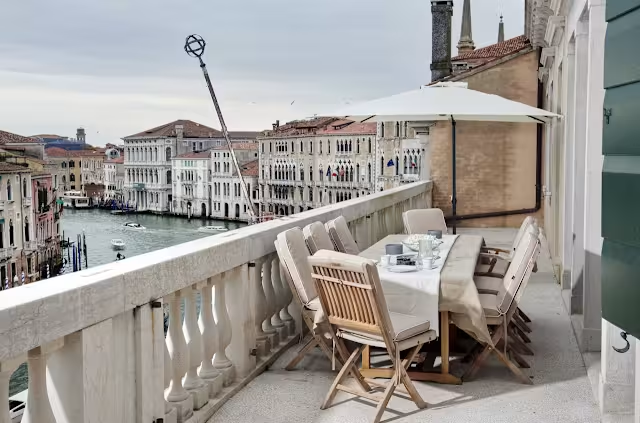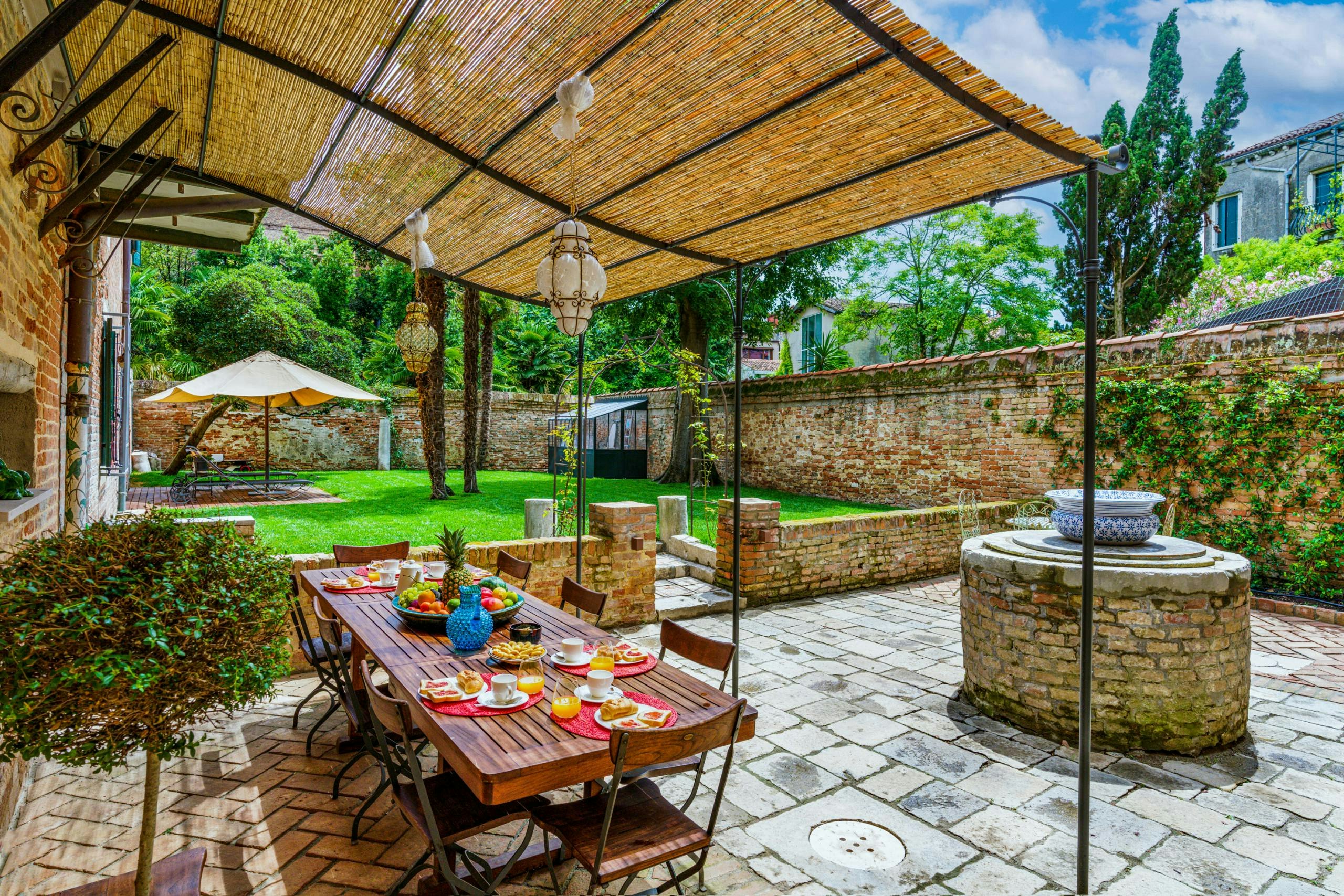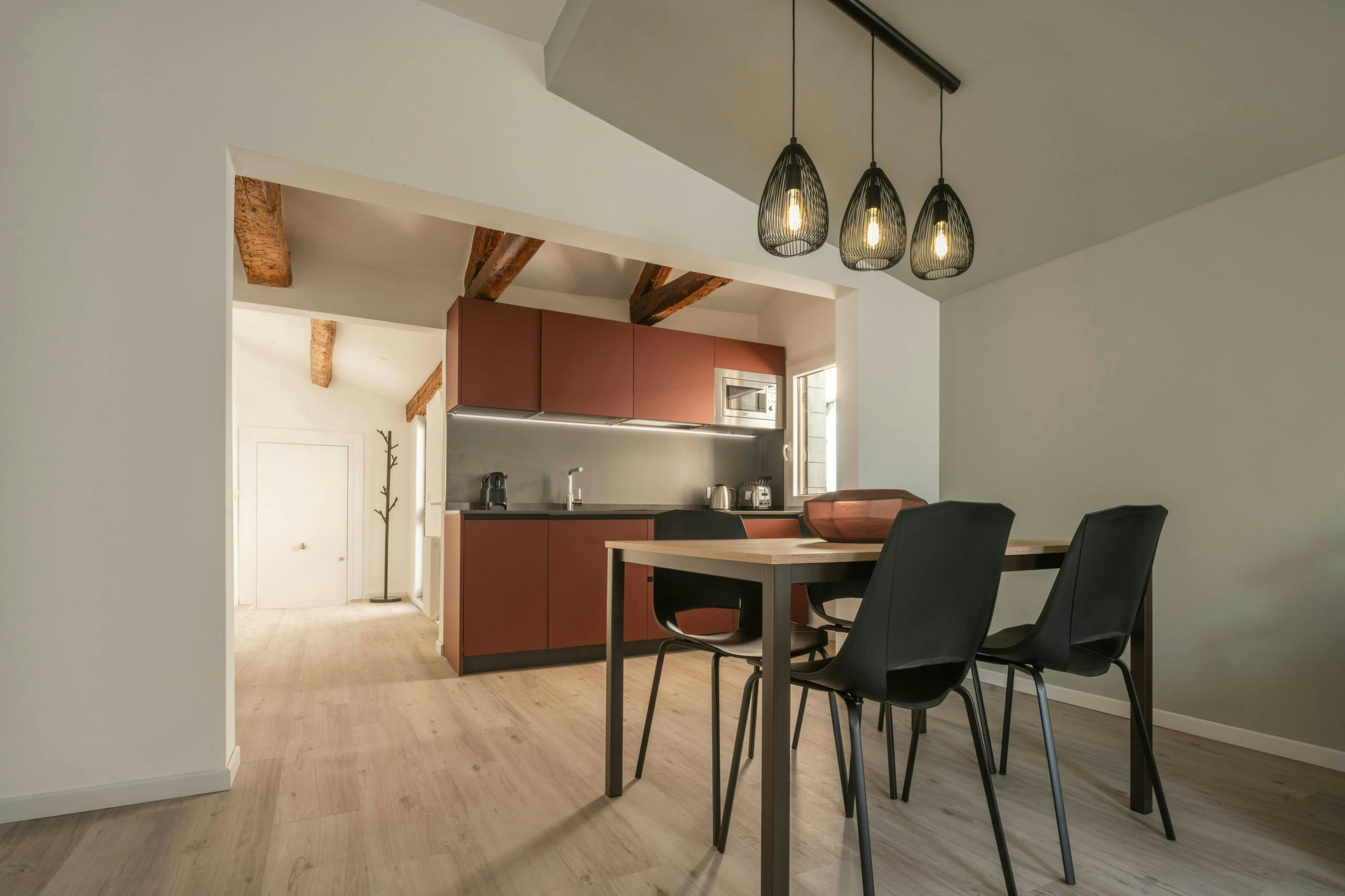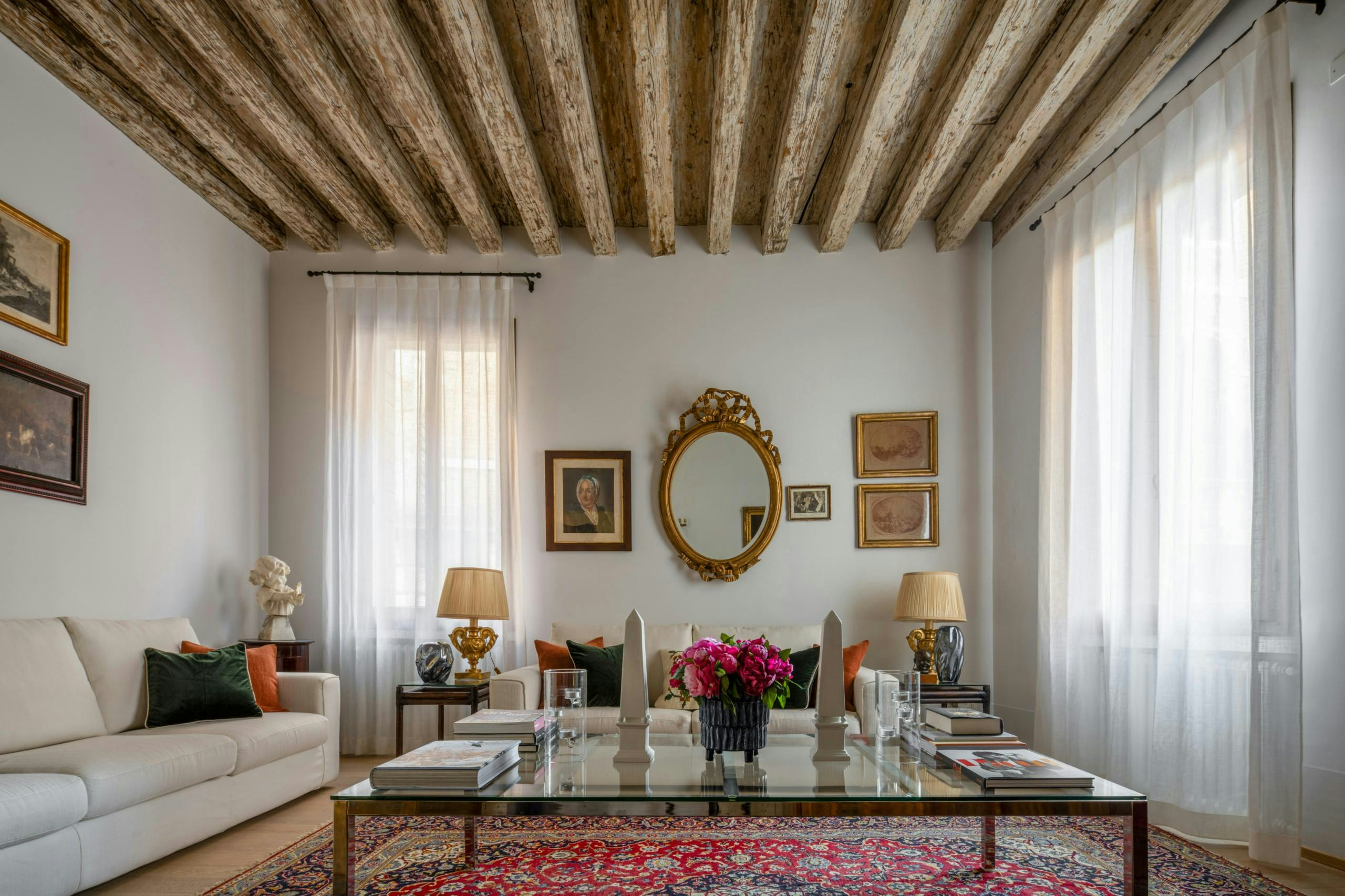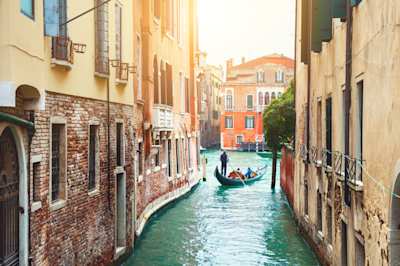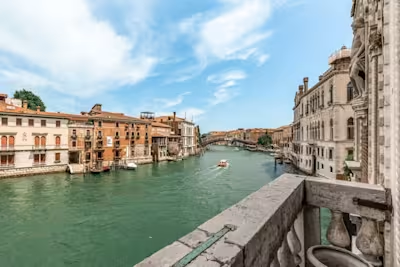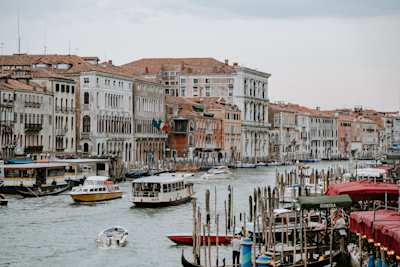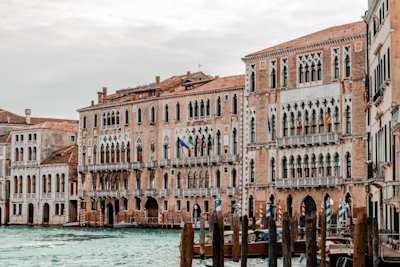7 Excellent Reasons to Visit Venice, The Floating City
From immersing yourself in centuries-old traditions to delving into a world of extraordinary art, Venice offers visitors a unique city break
~
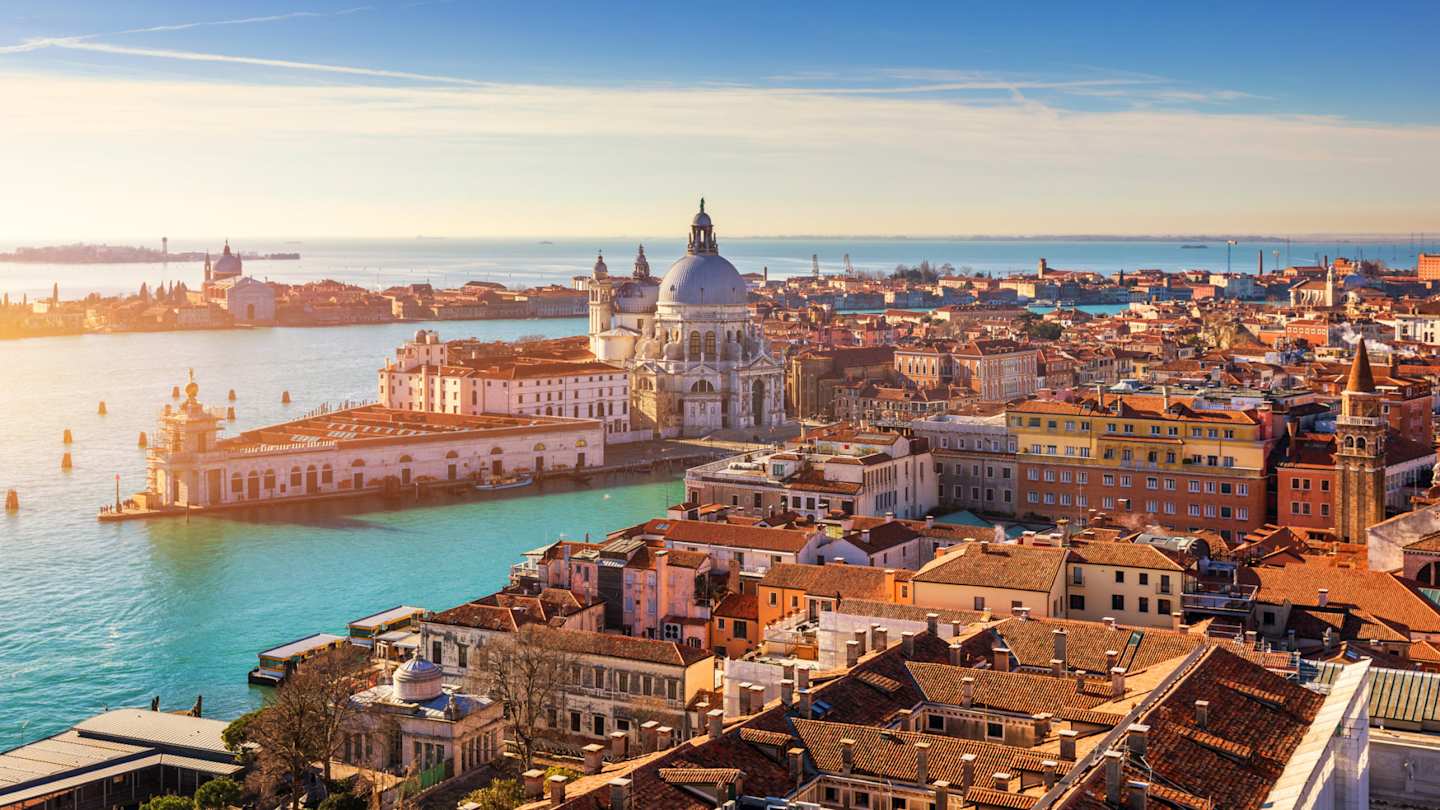
Venice is one of Italy’s most visited destinations, a captivating city crisscrossed by ancient waterways. Old buildings and grand palaces rise from the water, adding to the timeless feel of the place. Blending history, art and culture with a good dose of delectable food and drink, it’s somewhere that should be on everyone’s bucket list. No trip to Italy is complete without visiting this city, and our travel experts at Plum Guide are here to show you why. Take a look at our top reasons to visit Venice.
Cruising along the canals
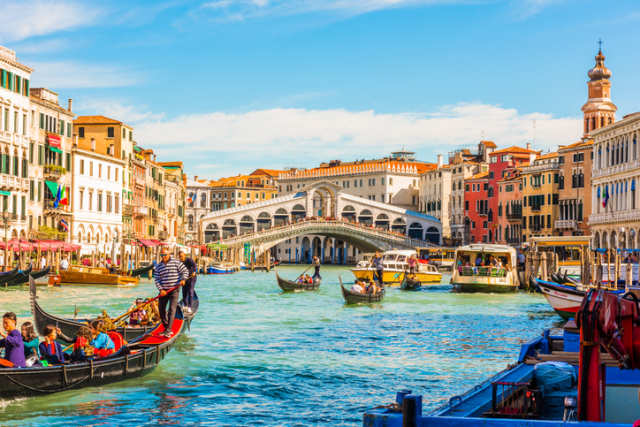
Panoramic view of the Grand Canal with gondolas and the Rialto Bridge (Ponte di Rialto), Venice, Italy
Venice’s most defining feature is its network of canals. Winding their way through the city, these waterways function as roads, transporting people, goods and services around the city. The best way to explore is with a traditional gondola ride. Be sure to choose a private ride for the best experience. Although it’s more expensive, it’s an excellent way to see the more hidden parts of the city compared to the public vaporetto or water bus.
There are around 150 canals in the city, but the largest and most famous is the Grand Canal, which forms a 4-kilometre-long ‘S’ through Venice’s historic centre. It’s lined with centuries-old palaces, many dating from the 13th and the 18th centuries. They were home to Venice’s rich and noble families who constantly wanted to outdo one another, resulting in an impressive display of architecture and artistry. Spanning the Grand Canal are four famous bridges, including the iconic Rialto Bridge. This marvellous landmark once played an important role in connecting the political district of Saint Mark’s with the economic community of San Polo.
Island hopping
There are over 100 islands in Venice, separated by canals and linked by bridges – sometimes, you’re not even aware you’re crossing between them. Each of these islands has its own distinct character, providing plenty of things to see and do. There are several ways to island hop between them, whether you get around on the waterbus, hire a water taxi or charter a private boat.
One of the most interesting islands to visit is Murano, known for its glassmaking tradition that dates back to the 13th century. Watch the craftsmen in action at the many workshops and pick up a few vases, chandeliers and sculptures to take home – these glass creations make one-of-a-kind souvenirs. Burano is also worth a stop if you’re interested in arts and crafts. The island has a long history of lace-making, and as well as visiting the Lace Museum, be sure to browse the shops for products like handkerchiefs, doilies and tablecloths. For something completely different, why not enjoy a beach day on Lido? This 11-kilometre sandbar is best known for hosting the Venice Film Festival but also has sunkissed beaches to relax on.
Carnival of Venice
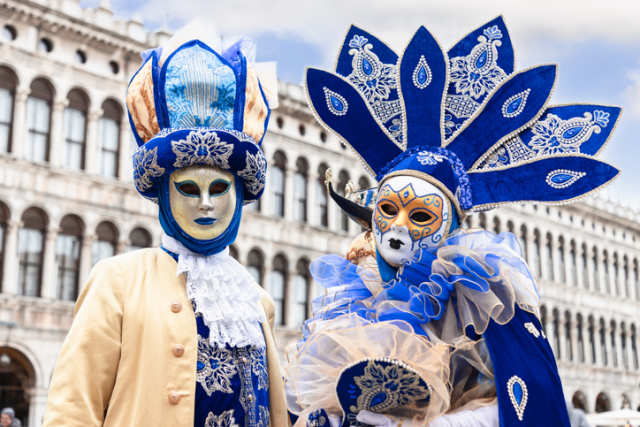
A couple of participants in the Venetian carnival wearing original blue masks on Piazza San Marco, Venice, Italy
One of our favourite reasons to visit Venice is its annual Carnevale, one of the most famous carnivals in the world. The earliest mention of it dates back to the 11th century when citizens would celebrate the end of winter with a street party. The dates change each year, but it usually takes place in the two weeks leading up to the start of Lent. Masks and costumes have always been an essential element of Carnevale. Wearing them allowed festival-goers to be anonymous and let go of their inhibitions, hiding their social status and engaging in activities that would usually be frowned upon.
Carnevale is an incredible spectacle – visitors are encouraged to dress up and participate in the festivities. A grand opening in St. Mark’s Square kicks things off with various performances and parades. Throughout the following two weeks, masked balls are held in palaces around the city, and street performances, exhibitions, live music, theatre performances, costume competitions, and water parades are on the itinerary. Even the gondolas get dressed up for it.
Mouthwatering cuisine
Thanks to its location on the Adriatic Sea and its past as an essential trading empire, Venice has an interesting and distinctive cuisine. Access to spices like nutmeg, ginger and saffron and influences from later conquests like Austria and France have resulted in unique and tasty dishes. Unsurprisingly, seafood dominates the menu, but you’ll also find vegetables such as asparagus and artichokes grown on its more fertile islands.
Cicchetti is typically Venetian, consisting of small plates of food similar to tapas. There are all sorts of dishes to try, including crostini (open-faced sandwiches) and polpette (fried balls of tuna, potatoes, cheese or meat). They’re typically served in bácari, or wine bars. Sarde in Saor is a must-try if you like seafood. Said to have originated from sailors and fishermen as a way to preserve fish, it consists of fried sardine fillets marinated in a sweet and sour combination of vinegar, raisins, onions and pine nuts.
Amazing art and museums

The ornate ceiling in Doge's Palace, decorated with stucco and frescoes made by Veronese, Tintoretto and Bassano, Venice, Italy
Venice is a treasure trove of art, from Renaissance paintings to iconic 20th-century pieces. There are a wealth of galleries and museums to visit, and you could easily spend each day of your holiday browsing a different one.
The Scuola Grande di San Rocco is a great place to start your sightseeing. It’s one of the most lavish buildings in the city, home to an impressive collection of paintings by Venetian artist Tintoretto. Another essential stop is the Ca’ Rezzonico, set inside a stunning restored palace. Dedicated to the art and culture of 18th-century Venice, the museum is home to paintings, Murano glass chandeliers, decorative arts and Carnevale frescoes. The Gallerie dell’Accademia is also an excellent place to admire Venetian art, featuring Byzantine-inspired work and Baroque pieces. Doge's Palace (or Palazzo Ducale) is another must-visit. The stunning interiors are home to pieces like Tintoretto’s Paradise and Vittore Carpaccio’s Lion of Saint Mark. During your visit, you'll also walk across the famous Bridge of Sighs.
For those interested in modern art, the Peggy Guggenheim Collection showcases European and American art from the 20th century. See famous pieces from the likes of Picasso, Pollock and Kandinsky, ending your visit with a wander around the relaxing sculpture garden.
Exceptional wines
Oenophiles looking for reasons to visit Venice will be pleased to hear that it’s one of the most unique wine regions in Italy. Wines have been produced here since 200 BC, with the regions of Veneto, Friuli-Venezia Giulia, and Trentino-Alto Adige collectively referred to as the ‘Republic of Venice’.
Veneto is one of the most visited wine regions, producing both reds and whites. As well as the prestigious Amarone, another red you’ll find here is Valpolicella, a sweet and fruity blend accounting for a third of the wine produced in Veneto. The region is also home to Prosecco, which is made using Glera wine grapes specific to Veneto and Friuli-Venezia Giulia.
If you prefer white wine, Friuli-Venezia Giulia is famous for its light and fragrant whites such as Sauvignon Blanc, Pinot Grigio and Riesling. You’ll also find local varieties such as Friulano, Verduzzo and Picolit. Trentino-Alto Adige is in the very north of the region, sharing a border with Austria. Over half of the wines produced here are white, with the main varieties being Pinot Grigio, Chardonnay, Gewürztraminer and Pinot Blanc. Meanwhile, Schiava is the most popular red wine here, but you’ll also come across Lagrein and Pinot Noir.
Those willing to venture into the Venetian countryside will have plenty of options for visiting wineries and vineyards. We recommend Azienda Agricola Cantina Spada, offering a tasting selection of red, white and dessert wines among 10 hectares of verdant countryside.
Day trips to other Italian cities
Venice is surrounded by many interesting towns and cities, all of which are a short train ride away. Its access to incredible day trips is one of the best reasons to visit Venice, so while you’re here, you may as well make the most of your time by seeing more of Italy. Here are some of our favourite destinations.
Verona

City of Verona and Adige River aerial view through a leafy tree
Just over an hour by train, Verona is a must for couples on a romantic break. Not much has changed since the 16th century, when the city inspired Shakespeare’s Romeo and Juliet. Visit Juliet’s House, complete with a balcony and bronze statue that you can rub to bring love into your life. Browse through the market stalls in Piazza della Erbe before heading to the magnificent Renaissance gardens of Giardino Giusti. If you’re visiting in the summer, you may even be lucky enough to catch the annual opera festival held in the Roman amphitheatre.
Lake Garda
Italy’s largest lake is reachable in ninety-three minutes by train. Take a ferry and zig-zag your way across the lake, visiting villages like Lazise, Gargnano and Limone sul Garda, all offering fantastic views of the water and surrounding mountains. In Sirmione, visit the impressive 14th-century Scaligero Castle and climb the tower for photogenic views of the town and the lake. Sirmione is also known for its thermal spas – we recommend Aquaria Thermal Spa for a relaxing pampering session.
Bologna
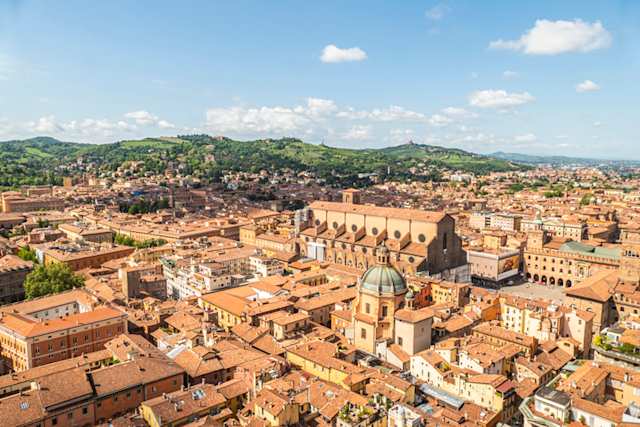
Aerial view of Bologna with the beautiful Maggiore Square and the tower, near Venice, Italy
Foodies should make a beeline straight for Bologna. An hour and a half by train, the city is widely regarded as Italy’s culinary capital. You won’t find spaghetti bolognese here. In fact, it doesn’t even exist according to locals – instead, try dishes like tagliatelle al ragù, or cotoletta alla Bolognese, which is a veal cutlet coated in breadcrumbs and layered with cheese. Stroll through the Quadrilatero, Bologna’s oldest market, and pick up delicacies like cured meats, cheeses and olive oil. You’ll also find many wine bars and eateries where you can enjoy a glass of vino and a bite to eat before heading back to Venice.
